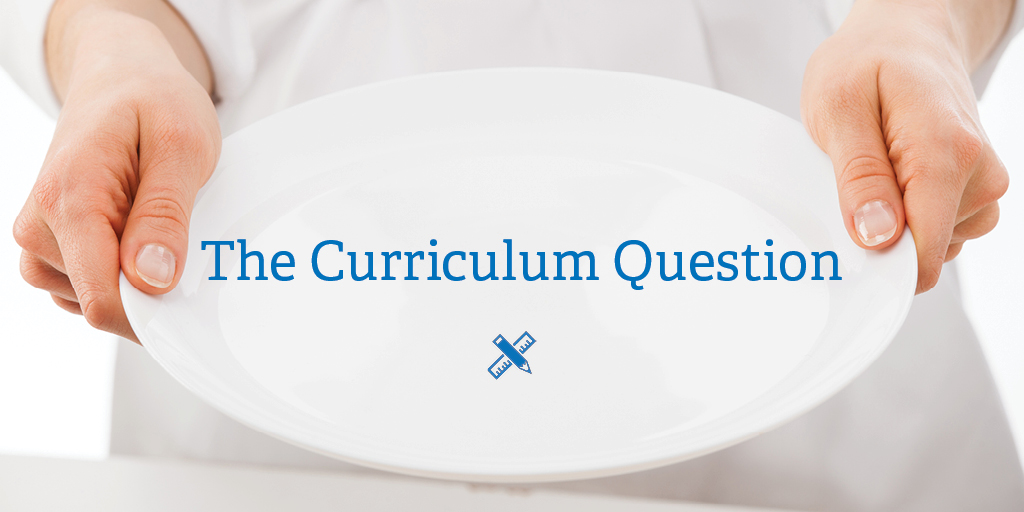
A student is sitting down to eat a “meal” of information that has been prepared for them. One teacher offers them a homemade meal as a chef would, with different ingredients pulled together to create the meal. Another teacher produces a quick ready-made meal that has been provided for them (think Hamburger Helper). The student is offered both meals—which will they eat?
This is an overly simplified metaphor, but one that many teachers struggle with. It is also a question that leaders in education struggle with. We want to give teachers freedom and latitude to develop lessons around the curriculum. We know in our heart that this is usually more engaging and has a much higher degree of buy-in from the teacher. But on the other hand, we might read research about instruction that says we need explicit phonics instruction, and then we realize that phonics instruction needs to be aligned from kindergarten to first grade to second grade. We might then realize it makes way more sense to have a canned curriculum that we all use to work through phonics instruction, instead of everyone just making up their own “recipe.” So, we now ask ourselves if that is a better approach.
The Role of Student-Teacher Relationships
This question is a good one and the answers are complex. Different philosophies contend that both are appropriate and valid. But what does research show us about these two different types of strategies?
For starters, it must be said that student learning takes place when the student feels a strong connection with the teacher. Regardless of the curriculum, the approach, or the instruction, this must be in place.
Let's assume that a teacher has strong relationships with their students. Should administrators and curriculum leaders give that teacher a textbook with a calendar of what to teach and when to teach it? Or should the principal give the teacher the standards that need to be taught and let them figure it out on their own?
Finding the Balance
The answer is probably some of both. Neither of these extremes should occur all of the time. The better question might be when is one of these philosophies more appropriate than the other? And what advantages and disadvantages are there to either?
For starters, I think all teachers should see the textbook as a tool to use and not as the curriculum. Covering material is important, but if we are really teaching effectively, we are adjusting instruction as we go in both pace and depth. In order to do that well—and do it effectively—teachers can’t always stick to the textbook.
Having a textbook and an agreed-upon curriculum anchors the instruction and creates a common language, so there is an advantage to having one and using it. Instead of each teacher doing it his or her own way, there is a commonality to what's being taught and how it's being taught. Having blind faith in the textbook isn’t ideal, but it does have its place in the classroom.
The Importance of Professional Development
Teachers should also remember that textbooks are not the be-all and end-all. And even though textbook companies have begun to offer more tiered resources and leveled instructional tools, they still aim for the middle of a classroom. When thinking about engagement, we must understand that whether it is a textbook or another source, there must be engaging strategies that coincide with the material being taught (i.e., even if we are serving Hamburger Helper, we can still spice it up to make it better).
Professional development is key (if I had a nickel for every time I have said that!). If we expect teachers to use engaging strategies and be willing to branch out beyond the textbook, we must train them how to do so. Doing this, and doing it well, also requires time for thoughtful collaboration between teachers. This is why we sometimes see teachers lean on the textbook. For the same reason a parent might grab the Hamburger Helper in need of a quick meal, a teacher might lean on the textbook if there isn’t adequate time to prepare. Even though we know a dinner made from scratch would be better, there is a reality to life that sometime requires a something quick. As teachers try to hone their craft as the “chef” of the classroom, they need time to think and plan.
In the end, the most critical step in the process might answer our question best. This step is reflecting on the lesson and evaluating the learning. If students are learning to the depth that is required, does it matter how the teacher gets there? Again, time and training on that end is critical, but think about how important this is and how rare it is that we do it.
In the end, we need teachers to have time to become “chefs.” We must recognize the value of a canned curriculum when it is appropriate, and, most importantly, we must know if students have learned to know if we are effective regardless of the tools we use.
 Looking to add some professional development to your schedule over the summer break? Boxlight offers a range of engaging, differentiated PD to help teachers improve student outcomes. Plus, we are offering our MimioStudio™ educator-level certification at 50% off the regular price for a limited time. Click here to learn more!
Looking to add some professional development to your schedule over the summer break? Boxlight offers a range of engaging, differentiated PD to help teachers improve student outcomes. Plus, we are offering our MimioStudio™ educator-level certification at 50% off the regular price for a limited time. Click here to learn more!





